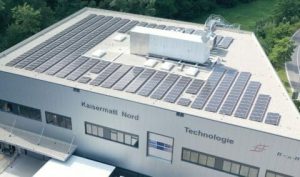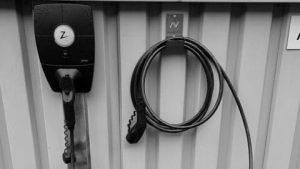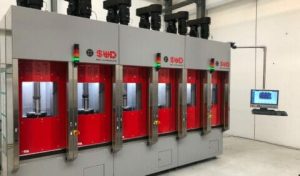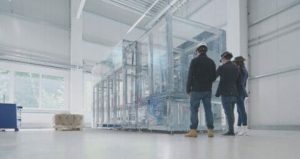Electric drive technology is a key element in reducing global CO2 emissions. With our technologies, we are helping to improve the carbon footprint of the electric motor.
Saving through product design
Segmentation saves a lot of material. The production of one ton of electrical steel strip generates a carbon footprint of approx. 2.4 kg CO2 e/kg steel. Traditional and widely used progressive die cutting (with simultaneous production of stator and rotor) results in a high proportion of scrap (approx. 50%) of high-quality electrical steel strip! As a result, one ton of electrical steel strip punched in a progressive die cut and installed in the finished electric motor generates a carbon footprint of 4.8 kg CO2 e/kg steel! Segmentation reduces the scrap content in the stator to 15 to 20% of the high-quality electrical steel strip. Thus, one ton of segmented electrical steel strip punched and installed in the finished electric motor generates a carbon footprint of approx. 2.9 kg CO2 e/kg. That’s a big difference. Added to this are the other benefits of segmentation such as lower material costs, more precise lamination stacks, and more.
Savings thanks to production processes
The BPS® production process produces efficient stator segments, thus making it possible to utilize the CO2 reduction shown above in large-scale production. The production process is then optimized in a closed machine with low punching forces and efficient bonding stations. The system includes water cooling and enables heat recovery. On-site production in the following process step saves on transportation, which further reduces the carbon footprint (see our article).
The EPS® system for fast bonding of stators and rotors is very efficient as well. The heat is fed directly into the stack and, depending on the design, the waste heat can also be recovered. Compared to the familiar continuous furnace, this means significant energy savings and a reduction in the carbon footprint.
Savings in our production
- Our production hall is heated purely electrically by heat pumps. We do not burn oil or gas.
- The hall is equipped with a photovoltaic system with an output of 119 kWp.
- We switched our electricity supply to renewable energies, reducing our carbon footprint from 300,000 kg CO2 to 50,000 kg CO2. Charging stations for electric vehicles are available for customers and employees.
We are also staying true to our mission when it comes to reducing our carbon footprint:
“We make your motors better!”
Facts
- Segmentation reduces the proportion of scrap in the stator by 30 to 35% of high-quality electrical steel strip
- BPS® and EPS® technology reduces CO2 in production
- Use of renewable energies in SWD production



